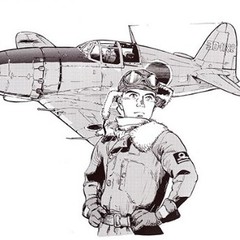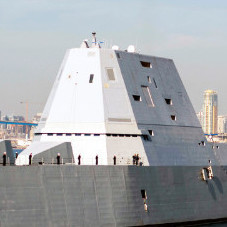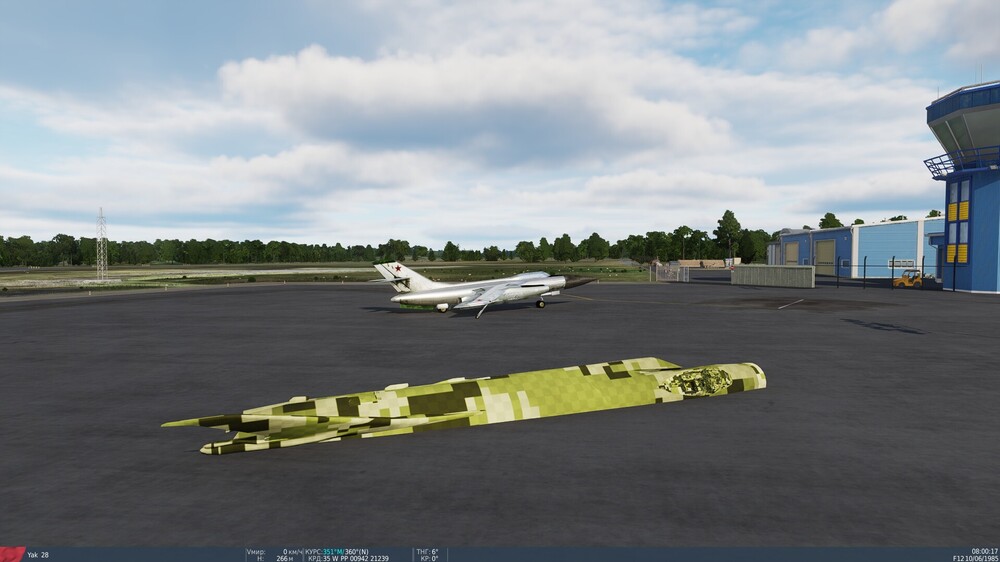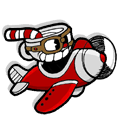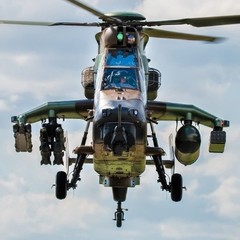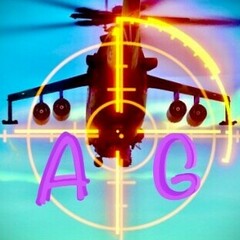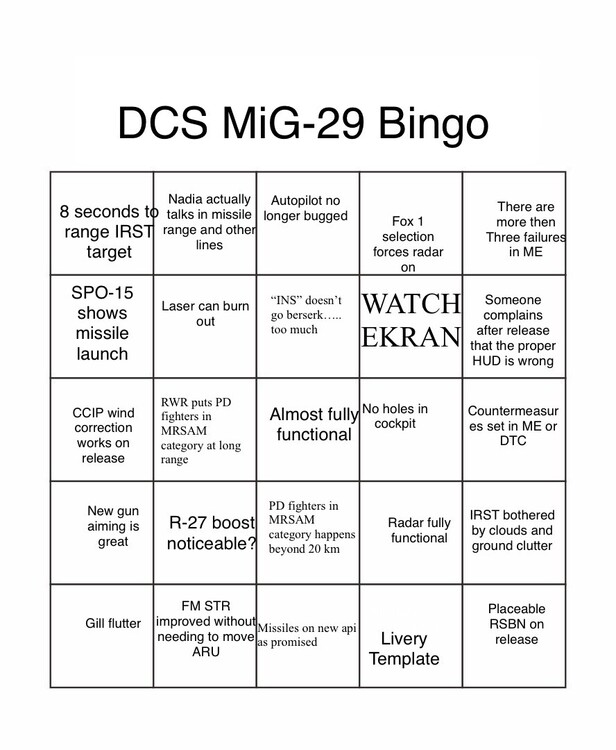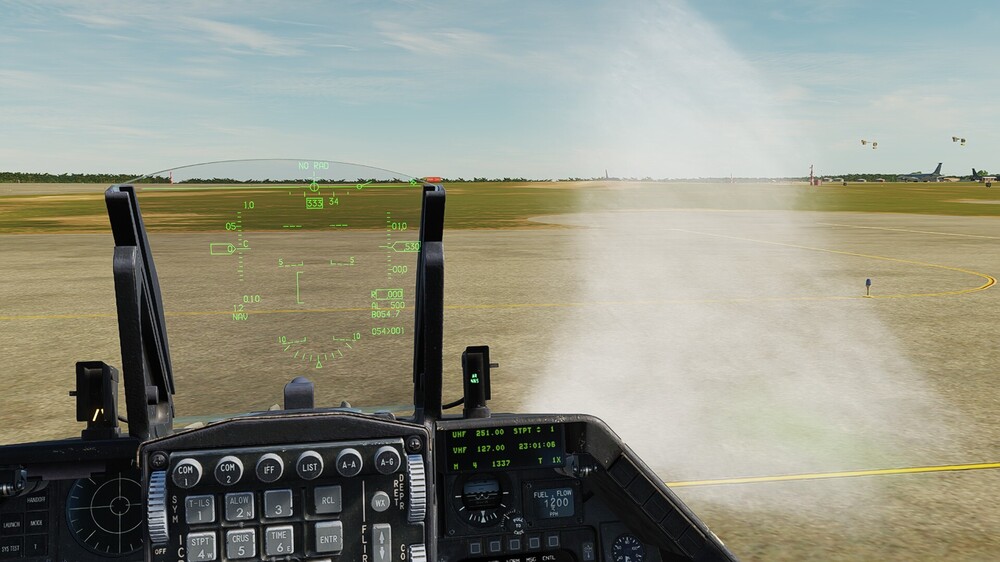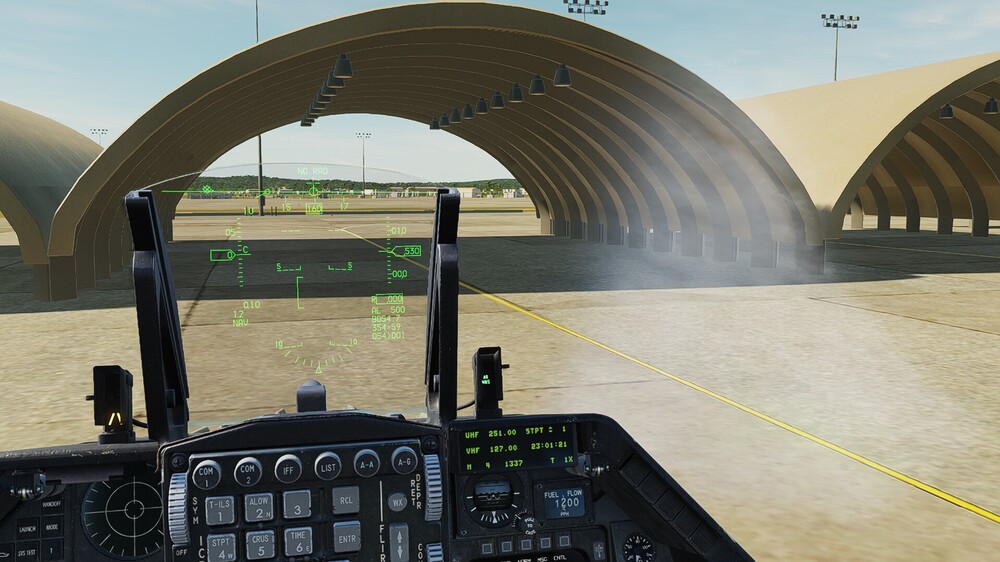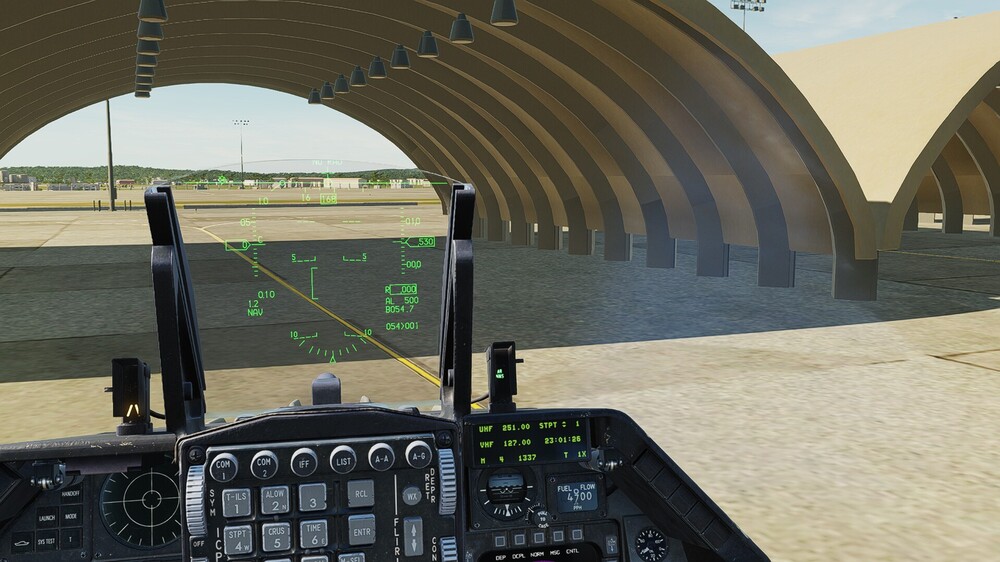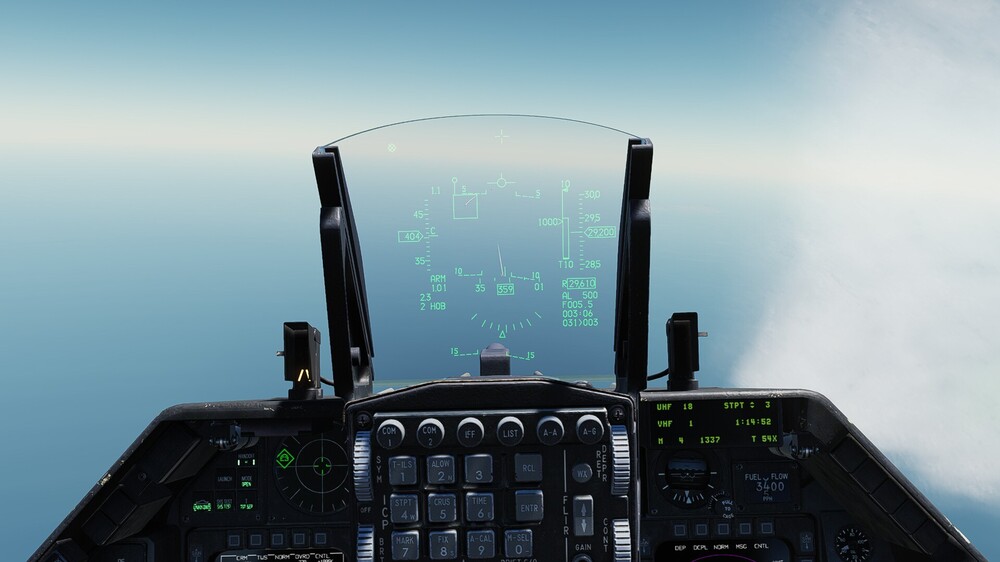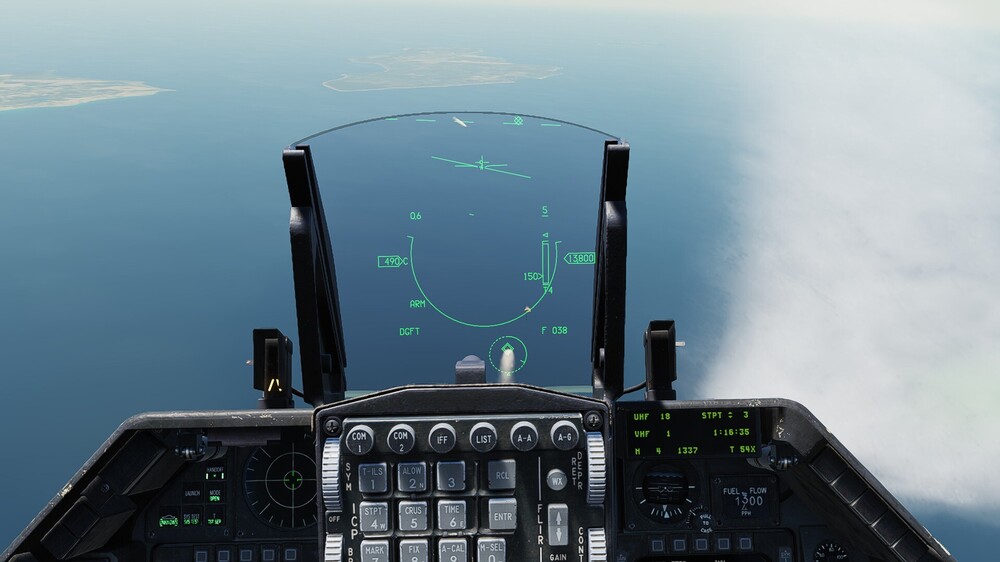All Activity
- Past hour
-
08. August 2025 Liebe Piloten, Partner und Freunde! Wir freuen uns sehr, euch eine vollständige Liste der Module vorstellen zu können, die im Pacific Theatre of Operations (PTO) Assets Pack enthalten sein werden. Parallel zu anderen Modulen wie die DCS: F4U-1D Corsair, der kostenlosen Karte DCS: Marianas WWII und der in Kürze erscheinenden DCS: F6F-3 Hellcat bietet das PTO Assets Pack eine reichhaltige und detaillierte Auswahl an Luft-, Boden- und Marineeinheiten der Vereinigten Staaten und des japanischen Kaiserreichs im Sommer 1944 im Pazifikkrieg. Viele dieser Einheiten sind bereits fertiggestellt, andere befinden sich noch in der Entwicklung. Wir freuen uns auf euer Feedback. Wir machen stetige Fortschritte bei unserer zuvor veröffentlichten Funktion „Mission Save State“. Lest den folgenden Bericht, um zu erfahren, wie wir diese äußerst nützliche Funktion verbessern. Darüber hinaus haben wir unser kostenloses Testprogramm um mehrere fantastische Module erweitert. Ihr könnt diese Luftfahrzeuge und Karten kostenlos und unverbindlich ausprobieren. Testet sie noch heute! Vielen Dank für eure Leidenschaft und Unterstützung. Viele Grüße, Eagle Dynamics Pazifischer Kriegsschauplatz 1944 Neues zum Assets Pack Seit der Veröffentlichung der kostenlosen Karte DCS: Marianas WWII und der DCS: F4U-1D Corsair von Magnitude 3 möchten wir euch über die umfangreichen Bemühungen informieren, dieses Szenario mit dem PTO Assets Pack zum Leben zu erwecken. In Anlehnung an einige der Szenarien aus dem europäischen Kriegsschauplatz konzentriert sich das PTO-Szenario darauf, einen umfassenden Schlachtplan für die US-amerikanischen und japanischen Streitkräfte im Sommer 1944 zu erstellen und eine genaue Darstellung der Schlacht um die Marianen und der Schlacht im Philippinischen Meer zu bieten. Zu den neuen Spielerflugzeugen für dieses Szenario gehören sowohl die F6F-3 Hellcat als auch die A6M5 Zero. Seit unserem letzten Update zu diesem Projekt können wir euch nun die spezifischen Luft-, Land- und See-Einheiten vorstellen, die für das PTO Assets Pack entwickelt werden und die Besitzer des bestehenden World War II Assets Pack mit einem Rabatt von 30 % erwerben können: PTO-KI-Assets: Flugzeuge der Vereinigten Staaten F6F “Hellcat” SB2C “Helldiver” TBF “Avenger” SBD-5 “Dauntless” PBY “Catalina” P-38L “Lightning” Schiffe der Vereinigten Staaten Flugzeugträger Enterprise Leichter Flugzeugträger der Casablanca-Klasse Leichter Flugzeugträger der Independence-Klasse Schwerer Kreuzer der New-Orleans-Klasse Schwerer Kreuzer der Baltimore-Klasse Leichter Kreuzer der Cleveland-Klasse Zerstörer der Fletcher-Klasse Transporter der Liberty-Klasse Öler der Cimarron-Klasse Bodeneinheiten der Vereinigten Staaten Panzer M4A2 Sherman Leichter Panzer M3A1 “Stuart” Kettengetriebenes Amphibienfahrzeug LVT-4 Kettengetriebenes Amphibienfahrzeug LVT(A)-4 Amphibien-Lkw DUKW-353 US-Marineinfanterist Personal der US-Marine-Flugzeugträger Seemann der US-Marine Kaiserlich-japanische Flugzeuge A6M5 “Zero” D4Y “Judy” D3A “Val” B6N “Jill” Kaiserlich-japanische Schiffe Flugzeugträger Shokaku Leichter Flugzeugträger Chitose Schlachtschiff Kongo Schwerer Kreuzer Mogami Leichter Kreuzer der Agano-Klasse Zerstörer der Yugumo-Klasse Zerstörer der Kagero-Klasse Transporter der Kashino-Klasse Kaiserlich-japanische Bodeneinheiten Tankette Typ 94 Panzer Typ 95 Ha-Go Fahrzeug Kurogane Typ 95 Panzer Typ 97 Te-Ke Panzer Typ 97 Chi-Ha Panzer Typ 97 ShinHoTo Amphibischer Panzer Typ 2 Ka-M 47-mm-Panzerabwehrkanone Typ 1 20-mm-Luftabwehrkanone Type 98 Type 91 10-cm-Haubitze Type 92 70-mm-Haubitze Type 10 120-mm-Luftabwehrkanonen Soldat der kaiserlichen japanischen Armee Seemann der japanischen Marine Speicherung des Missionsstatus Entwicklungsfortschritt Nach der ersten Veröffentlichung der Funktion „Speicherung des Missionsstatus“ haben wir euer Feedback gesammelt, um weitere Verbesserungen vorzunehmen. Auf dieser Grundlage haben wir eine API-Funktionsanfrage an unsere talentierte Skripting-Community gestellt, die sehr positiv aufgenommen wurde. Eine häufig geäußerte Anfrage war die Speicherung des Zustands zerstörter Einheiten auf dem Schlachtfeld. Wir haben uns nun mit diesem Problem befasst, und zerstörte statische Objekte werden anstelle jedes zerstörten Bodenfahrzeugs, Flugzeugs, jeder Infanterieeinheit oder jedes statischen Gebäudes (keine Gelände-/Kartengebäude) im Missionsspeicher-Status erstellt. In diesem Sinne bleiben die Trümmer auf dem Schlachtfeld dort, wo die Zerstörung stattgefunden hat. Mit dem Missionseditor erhalten diese Objekte automatisch einen „versteckten“ Parameter, um die Kartenansicht nicht zu überladen. Wenn ihr sie jedoch aufgrund eurer Handlungswahl aus der Mission entfernen möchten, könnt ihr sie in der Einheitenliste des Missionseditors finden und löschen. Wir werden diese Verbesserung in einem kommenden Update veröffentlichen, sobald die Tests vollständig abgeschlossen sind. Aufgrund eures Feedbacks wird unsere nächste Aufgabe zur Verbesserung des Missionsspeicherzustands darin bestehen, die Wegpunktparameter einer Gruppe zu speichern. Diese Arbeit ist noch im Gange und umfasst die Möglichkeit, bestimmte Parameter von Bodenfahrzeugen wie ROE und mehr zu speichern. Neue Module zum kostenlosen Ausprobieren Entdeckt neue Luftfahrzeuge und Karten kostenlos Um euch dabei zu unterstützen, neue Inhalte zu entdecken, erweitern wir unser kostenloses Testprogramm. Ihr könnt nun alle sechs Monate die folgenden zusätzlichen Module 14 Tage lang kostenlos testen. Neue Module zum Probieren: Südatlantik-Karte Kola-Karte Sinai-Karte CH‑47F F‑5E Remaster NS 430 F‑5E Flaming Cliffs MiG‑15bis Flaming Cliffs F‑86F Flaming Cliffs Flaming Cliffs 2024 Navigiert einfach zur Seite „Try ‘n’ Buy“ im DCS-Launcher und sucht nach der Schaltfläche „TRY“! Ihr könnt auch kostenlose 14-Tage-Lizenzen über die kostenlosen Testversionen auf der DCS-Website aktivieren. Nachdem ihr eure Auswahl getroffen habt, installiert ihr das ausgewählte Modul über den Modul-Manager. Weitere Informationen findet ihr in der Anleitung zur Installation von Modulen. Wir hoffen, dass ihr diese Gelegenheit nutzt, um neue Module und Karten völlig kostenlos zu entdecken. Abermals vielen Dank für eure Leidenschaft und Unterstützung. Viele Grüße, Eagle Dynamics
-
Спасибо, дружище! Ну что-ж, после такой прекрасной новости будет не лишним выпить за здоровье разработчиков чашечку сакэ и крикнуть троекратное "банзай!!!" Чем, собственно, сейчас и займусь.
-
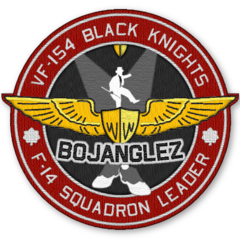
reported Extreme oscillations in motion after shuttle hook-up
Bojanglez replied to BrassEm's topic in Bugs and Problems
Im sad to report that after a good stretch of shooting myself off of CVN 73 in the Tomcat with no problems they seem to be back. Odd thing was that the first time it happened again I launched twice in a row within 5 min and the only thing that had changed was the loadout. (All in multiplayer) 1st. time just sidewinders, no bags and low fuel = no shake 2nd. time heavy AG loadout = SHAKE! Since then it just seems to be back. Timing seems to work roughly with the latest update but unsure. Sadly CVN 73 is not the safeshot I thought it would be. -
Ddg1500 started following Any news on new tail rotor model?
-
I heard there is a new tail rotor model that is WIP on Apache any news about it ? Or it already implemented. By the way, the rudder trim during ground taxi is still off
-
Just yesterday I was really happy when I saw this screenshot: but after taking a closer look, I found that it is an ejected pilot only... pity .
-
Alex536gv joined the community
-
Please consider this which will make the VR experience better. When it comes to hand tracking, I have tested extensively now with different options and settings and third-party devices like HTCC, and finger mouses etc. The best experience so far is having hand tracking turned on and visible with the DCS software settings. in order to get the hand to interact with the buttons etc as you know you must turn off pointers in the hand option. this works really great and i want to thank your team for this. however while button presses are great, the unfortunate truth is knob turns or flipping switches up/down are really difficult and make the hand tracking experience really hard and diminishes from its overall use. Now What i found to works really well is the mouse clicks to toggle switches and rotate dials. note this is only for knobs and dials. unfortunately this cannot not be done when you have the hands visible since the hands take over the movement. In-addition what is really great is that you can map mouse controls to buttons. So here is what i am suggesting your team look into to really make this "hand tracking" great. Allow us to use mouse clicks and scroll while like it does in mouse mode while the hands are visible. it very clear that DCs knows what control you are touching, so just let the mouse control buttons superseded the hand movement as a option. Here is a practical way this would be used. First i would bind my mouse buttons to my hotas, or i would use a finger mouse, pointCTRL or slugmouse. Now all i do is enable hand tracking and when i move and press buttons with no mouse click it functions as it does now. However if i go and touch a switch or a dial, since it so hard to key those to work properly, i can now simply use the finger mouse to click, or scroll dial, or hotas key binding and now i can quickly move around to controls and activate them. Note, seeing the hands in the hand tracking helps you quickly navigate to the controls faster and easier and feels more real. PointCTRL and Slugmouse or HTCC hides the hands and you have to find the mouse. Also if you move your head the mouse pointer gets offset and you lose your place again. works but not ideal. while you can turn the pointer on for hand tacking, first the pointer is not lined up with the fingers so its offset and you have to watch the crosshairs and try and line it up over your control. this can be really tricky or take a bunch of time. again not ideal. you can turn off hand tracking and use the "look" feature but again you have no hands which give you the best immersive experience. and Second, getting the center of the screen crosshairs to look far down is really difficult unless you completely reposition your body. again from my Experience in testing al these methods, i found normal hand tracking with pointers off to be the best (minus the dials and switches). But if you could bind those to work of over ride the hand movement when performed for these...well that would really make this a unique and exciting experience. even with a pointCTRL or slugmouse or finger mouse, all you would need to do is touch the control and click the mouse, or scroll the wheel Please consider this as both functions already exist in the core, hopefully it should just be allowing one to work while the other is active. thank you for your consideration.
-

STT lock on landed airplane?
3000 Black Jets of Allah replied to cesarferrolho's topic in DCS: F-14A & B
Well <profanity>, the more you know, found the patch notes from 2022 and you're right. Must have just been placebo or a coincidence whenever I've flipped MLC to OUT while supporting sparrows. - Today
-
There is not. There was a very specific patch note about this a while back. The AWG-9 will transition to using a range gate and/or speed gate when STT'ed. Apr 8 2022
-
-

STT lock on landed airplane?
3000 Black Jets of Allah replied to cesarferrolho's topic in DCS: F-14A & B
There is definitely an MLC filter when STT'd, the only way to not have one is to be in a look-up scenario or get the RIO to turn it off. -
You can go as small as 1028x768, you just have to manually input it. It's what I use.
-
-
Ir guided missiles, specially 60s and 70s have a LOT of flare tolerance, they work just too good to be comparable at their real life performance, reading like the first wikipedia article i found it says the aim9b, d, e, g and j variants combined had a 18% chance of kill in the vietnam war, in the game they work way better and have a lot of resistance of flares, When im playing 60s servers and someone launch a missile at me, i cut burners, try to manouver mantaining a good speed and good G’s, sometimes even pre flaring, and the missile just doesnt care and gets me, im supose this is not meant to occur with like a 1st gen missile that has a caged seeker and poop flare resistance I think its about time this game implements irccm mechanics and a complete overhaul of the ir guided missiles, even war thunder that is not a sim game have this implemented, this would add a bit more of realism to the game
-
https://forum.dcs.world/topic/377316-pacific-operations-assets-pack-mission-save-development-progress-new-free-trials/#comment-5679994 Я хз, как нормально процитировать на смартфоне в форумном приложении, но по ссылке подтверждение от Бигньюи.
-
Good to know, thanks! The replacement mission is ready
-
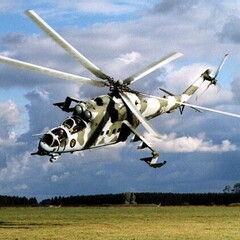
Free Mi-24P Campaign : The Dawn Of The Soviet-Afghan War
Raffi75 replied to dggoofy's topic in Missions and Campaigns
It worked. I don't know why I had the most trouble with mission 12. I managed to get the takeoff. I found a way. The Volk-2 took off on its own and flew straight to the area where Raven was. It hovered nearby and refused to interact. Only the last time did it work. Well, except that it took off on its own again, but this time it joined me and didn't cause any further problems. As I wrote earlier, aside from minor AI issues, I really enjoyed the entire campaign. The concept, the variety of tasks, the dialogue, and the overall atmosphere were excellent. There was never a moment of boredom. The mission length is perfect for me. I'm looking forward to the next installment of Major Ivanovich's adventures. -
Wostg started following Usefull hardware / software links.
-
Aapparently it is ok to have a 'skip BIT test' button for the Apache FCR, but not for the ATP BIT on the Viper
-

Deck Crew AI directing me on to blocked cat.
Rolds replied to DmitriKozlowsky's topic in Bugs and Problems
Could we maybe get the ability to manually connect to a catapult back to work around this vexing problem???!!! OR request which cat we will be directed to? -
With scripts like CTLD + CSAR, you can enable the Apache to transport infantry. Keeping the number of individuals loaded to 2, it can be realistic too
-
Permanent canopy reflection on right side regardless of lighting level, angle or direction. Canopy reflections turned off in special options, appears on both transparent and tinted canopy. Images and track file attached. This is a big issue if trying to spot an opponent. F-16 Canopy artifact.trk
-
My initial findings are kind of mixed. I'm not seeing much difference, if any, at all. But, just initial. I'll keep testing.
-
I’m at 2400 RPM starting like 10 miles out from landing, all the way down to the ground. Set it at 2400 and leave it. 2300? 2500? Doesn’t matter. Pick one you like, set it for landing and don’t touch it. Come into the pattern at 120 kts. After your upwind to downwind break, go full flaps, gear down, and 10 deg of elev trim as I mentioned before. SLOWLY adjust the throttle so that your climb rate is steady at zero. Do not use elevator to adjust your altitude. This is important. If you aren’t hands free by the time you are abeam the landing point. It’s going to get ugly for base and final, so just extend your downwind during these practice runs and make sure you are stable before coming around. You want to be able to arc to the runway to see over the nose, so the extended downwinds will hurt you, but don’t worry about that for your training. Getting the plane stable for landing is more important. With the 10 deg of elev trim, you’ll find yourself right at 90-100 knots. Again, don’t touch the elevator, only the throttle. You mentioned your airspeed is all over the place before touchdown. This is because you are using your elevator stick to try and keep yourself on desired glide slope. Just remember basic slow flight rules: “Pitch for airspeed, throttle for altitude.” Once you get this in your veins, you won’t even look at your manifold, that’s why I haven’t answered that question until now. Just keep the throttle where needed to maintain altitude on the upwind/downwind, and then play with it very gently in base to final turn. Again, your plane almost automatically holds 90-100 knots with 10 deg of trim, so you don’t even have to look at your instruments. Keep eyes on runway and other traffic in pattern. Just be cognizant that if you touch the elevator stick, your airspeed will change. In your head think, “Stick centered, I know I’m at the right speed. Pulled stick back, I know I’m too slow.” You hardly have to look at your airspeed or manifold once you get it. Now for your nose swinging all over the place: Everything in your landing needs to be smooth. Really smooth. Very small changes to pitch or throttle. You can’t just jam things around like in jets. And here’s the tip that will help you the most: Your right foot must follow your left arm. Push right rudder any time you push throttle forward, and vice versa. This also applies in flight, not just for landings. Practice practice practice. Let me know how it goes. I know you’ve got this! Cheers

.thumb.png.5df1987b2996b13507b528d68e459883.png)
